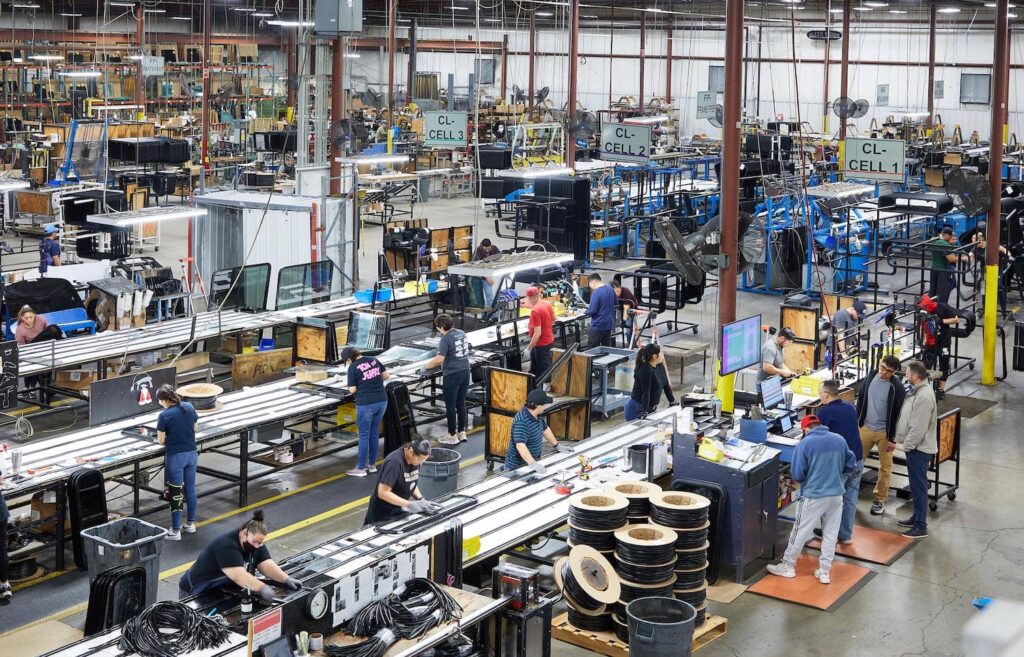Glassmaking originated about 4,000 years ago in the cradle of civilization, created by the Mesopotamians. A mix of sand, silica, soda ash and lime, the recipe for glass has not changed much over the years.
Four thousand years later Cleer Vision, a supplier of RV windows, takes the product of that original recipe and turns it into tempered glass to be used for RVs. The company celebrated its 20th anniversary in April.
“We saw strong demand for a quality window supplier in the travel trailer market and that has remained our niche over the last 15 years,” says Rick Collins, president of Cleer Vision.
Cleer Vision, a subsidiary of Airxcel, based in Elkhart, Indiana, takes manufactured glass and cuts and fabricates it for RV windows. They added their tempered glass production facility in 2010, becoming what one might say is the cradle for RV industry tempered glass.
“We felt if we wanted to be a serious contender in the RV market, it was critical we control the lead times, quality and cost of our glass,” Collins says.
The glass tempering process is a unique one. Large, nontempered sheets of glass are brought in and processed through one of several automated cutting machines that load the glass using robotics. The sheets are optimized, cut to the specific customer dimensions, and then broken apart by a trained worker. The operator moves the giant piece of glass to the scored areas by use of a table that has air blown through from underneath, much like an industrial air hockey table.
The specifications for cutting are input via a computer. The goal is to yield a 90%-plus usage of the glass while the rest is recycled.
The color of the glass sheets depends on their thickness. This is why some glass may appear to have a green tint while other sheets may appear gray. The size of a single glass sheet can be up to 130 inches by 96 inches. Individual sheets are stacked together and separated by a small layer of powdered coating to keep each sheet from scratching against the next one.
The individual pieces are then washed and dried before entering the 1,200 F tempering oven. This is how the glass gets tempered and how “quenching temper” occurs. The glass is then cooled using air applied by large blower motors.
Less than 10% of all RV windows are frameless. For frameless windows, all windows must go through a process known as edging which will remove all burrs and sharp edges from the sides, so that it can be touched and handled without someone accidentally cutting themselves.
Also, a silk screen is applied to frameless windows, which appear as the small dots around the edges of the glass.
As noted, most RV windows are framed and at Cleer Vision, that framing process happens at the company’s facility located on County Road 6 in Elkhart. Here, window-making transitions from robotics and machinery to a more labor-intensive activity and that is where the Cleer Vision labor force gets to work.
The bending of long pieces of aluminum into frames that surround the tempered glass is the first step on the assembly line. From there, different workers will add in the glass panels, screens, seals and hardware with each process occurring at a different workstation.
Some windows have two panes and the meticulous effort that goes into each individual window must be adhered to keep out moisture and provide a superior product that RVers can enjoy. Considering that more windows are being added to RVs to help with light, airflow and aesthetics, it’s easy to understand why Cleer Vision’s workforce is keeping busy during the cycles of the RV market.
This has helped Cleer Vision retain employees who have been with the company for many years.
“A significant number of our employees come from referrals. We strive to maintain a family environment and culture while fostering a small company, family-owned feel,” Collins says.
